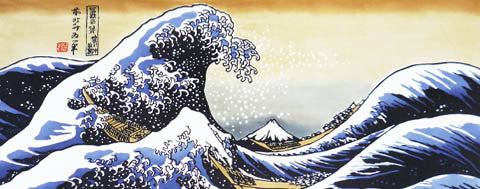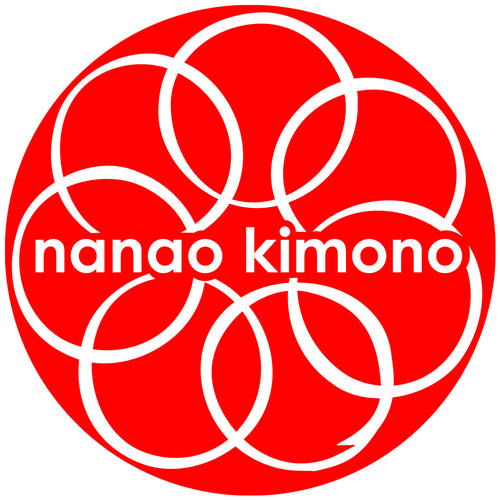Rien-zome
The Great Wave Ukiyoe Tenugui Towel
The Great Wave Ukiyoe Tenugui Towel
Couldn't load pickup availability
14.5 x 38.5 inches
100% Cotton
Made in Japan
The Great Wave off Kanagawa (Kanagawa-oki Nami Ura, "In the well of a wave off Kanagawa"), also known as The Great Wave or simply The Wave, is a woodblock print by the Japanese Ukiyo-e artist Hokusai. It was published sometime between 1830 and 1833 in the late Edo period as the first print in Hokusai's series Thirty-six Views of Mount Fuji (Fugaku Sanjūrokkei). It is Hokusai's most famous work, and one of the best recognized works of Japanese art in the world. It depicts an enormous wave threatening boats off the coast of the prefecture of Kanagawa. While sometimes assumed to be a tsunami, the wave is, as the picture's title suggests, more likely to be a large rogue wave. As in all the prints in the series, it depicts the area around Mount Fuji under particular conditions, and the mountain itself appears in the background.
Impressions of the print are in many Western collections, including the Metropolitan Museum of Art in New York City, the British Museum in London, the Art Institute of Chicago, the Los Angeles County Museum of Art, the National Gallery of Victoria in Melbourne, and in Claude Monet's house in Giverny, France, among many other collections.
“Tenugui” is a type of traditional Japanese towel, and can be used for anything a towel could be used for – as a washcloth, dishcloth, but often as a tapestry, decoration, quilt, headband, souvenir, or for wrapping items such as bottles.
"Rien-zome" brand created by an authentic Tenugui producer named TODAYA SHOUTEN located at Ningyo-cho, Tokyo. They have been producing wide variety of Tenugui since 1872. They focus on traditional hand-dyeing method called "Chu-sen". Also they keep many great designs for years. Enjoy Rien-zome Tenugui handmade by skilled artisans!
“Chusen” is a traditional method of dyeing using stencil paper. Since the dye infiltrates the cloth, the patterns appear on both sides. When the tenugui is used for a long period of time, the dye fades, giving it a well-aged look.




